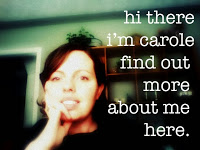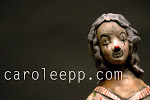by Carole Epp | Mar 30, 2014 | call for entry, emerging artist, job posting, monday morning eye candy, movie day, residency opportunity, show us your influences, technical tuesday
The
North Carolina Pottery Center is offering a two year Residency for one
potter/ceramic artist, beginning no later than August 1, 2014.
The
Residency is designed to help the creative and financial development of
an individual in pursuit of establishing their own studio practice.
A
recent grant from the Windgate Charitable Foundation has enabled the
Pottery Center to reinstitute its Artist-in-Residence program.
Who can apply?
Candidates with BFA’s, MFA’s, or equivalent life experience, are invited to apply, by April 15, 2014
Where and what is the North Carolina Pottery Center?
Located
in the central Piedmont town of Seagrove, NC, the North Carolina
Pottery Center is the focal point of a bustling pottery community of
about 80 nearby potteries.
The
Pottery Center serves the wider community of North Carolina potters and
pottery enthusiasts, and promotes public awareness and appreciation of
the history, heritage, and ever-changing tradition of pottery making in
North Carolina through educational programs, public services, collection
and preservation, and research and documentation. Please visit
www.ncpotterycenter.org
Facilities
The
Center sits in an attractive, wooded lot and consists of three
buildings. The remodeled Voncannon House (pictured above), which
contains living space (bedrooms, kitchen, laundry facilities, etc.) for
an Artist-in-Residence and periodic interns, office space for the
Seagrove Area Potters Association (SAPA), and a collection of resource
materials.
To the
north, across a spacious parking lot, is the 6,000 square foot main
Museum building, which contains exhibition space, a gift shop, offices, a
kitchen, and rest rooms.
Nearby
is the 1,500 square foot Education Building, with wheels, electric
kilns, and other clay-working equipment. And on the hillside just below
it are two working, wood-fired kilns: a traditional groundhog and a
two-chambered catenary arch kiln.
Details of the Residency
The
Artist-in-Residence will live in the Voncannon House, and will pay no
rent, but will pay for utilities while there. They will be responsible
for basic maintenance and cleanliness of the living space.
They
will have access to all facilities in the Educational Building,
including wheels, electric kiln and the two wood-fired kilns. Residents
are encouraged to bring their own equipment.
All clay and
glaze materials, and other pottery supplies for their own work, will be
purchased by the Resident. A standard fee will be levied for each use of
the wood-fired kilns, and residents will follow NCPC policies regarding
repairs and tidy up.
They will be required to work for the
Pottery Center 16 hours a week. This will include two half-days a week
(8 hours) in local K-12 school programs, while schools are in session,
and the remainder of the time in activities relating to the Pottery
Center (like helping at exhibition openings, helping with educational
and other research projects, and other tasks at the discretion of the
director). However they may not find other supplementary employment
outside of the Residency, and are expected to be full-time studio
artists.
Engagement with the staff and the wider facility is encouraged.
Residents
will be encouraged to network with the wider Seagrove community of
potters for professional development and social activities.
They
will be encouraged to sell work in area craft fairs and stores, and
will be given an End-of-Residence Exhibition at the Pottery Center. They
will also be able to sell work at the Pottery Center’s gift shop.
Their activities will be promoted on the Pottery Center’s website and social media outlets.
The Artist-in-Residence will receive $1000 a month for living and material costs.
The determination has been made that no pets, other than legitimate service animals, will be allowed.
Online Application Process
The online application process asks for the following information, please be prepared to enter that information.
1. Basic Information
2. Educational History
3. Resume
4. Artist Statement
5. Letter of Intent
6. References
7. Media
– Ten images files will need to be submitted during this part of the
process. For good image quality and a fast upload, your image files must
be sized around 1800 x 1800 pixels at 72 dpi (approximately 6″ x 6″ at
300 dpi). Please do not submit images smaller than this. Each image
should be no larger than 5mb. Image files must be named using the
following pattern: first initial last name file number. (i.e.,
jsmith01.jpg, jsmith02.jpg, etc.)
by Carole Epp | Mar 29, 2014 | call for entry, emerging artist, job posting, monday morning eye candy, movie day, residency opportunity, show us your influences, technical tuesday
Artist Statement:
The most recent body of work has stemmed from a
kind of ceramic folklore involving peoples’ initial discovery of the
material. Before people fired pots they were a mobile society of basket
makers. As they began to cultivate the land and harvest a greater
surplus of grain they required more containers that would be resistant
to rodents and the open air. They lined their baskets with clay and in a
serendipitous event a fire destroyed most of their
material possessions but left them with some insight. The interior of
that basket became the first ceramic pot. Beyond its potential as a
prototype for their future, in its hardened exterior bore the
impressions of their past. It became a fossil to an ephemeral and mobile
society; a momento to a new culture that would seek eternal life
carving their name in earth.
The range of information this object says about
their society’s soft culture has lead me to find new meaning in our
material culture. If one can deduce that a mobile society produces
impermanent objects from ephemeral materials, and sedentary society
produces more permanent objects from archival materials; than what is to
be inferred from a culture which produces disposable objects from
permanent materials?
zachbalousek.com
by Carole Epp | Mar 29, 2014 | Uncategorized


“My interest has remained inconveniently multi-faceted in most things ceramic – from its misty prehistory, when only clay and gods mattered, to the subsequent historical offerings from many lands. Food and tea presentation, clay and glaze research, the art of throwing, the art of handbuilding, kilns, riverside shards, emissivity, the smell of old clay, on and on. The straight path to the studio from the house is necessarily most serpentine some days. Some months of the year, though, make it much simpler. When the days grow warmer I work much more outside, where pots dry more quickly. I become a potter and become familiar again with muscle and ache. From November on, when things are freezing solid outside, body activity slows down and more cerebral struggle takes its place. A farmer might go curling during this time. I suppose I go handbuilding. This sequence has been part of my making for well over 30 years. The only thing I can see that has changed is more honing, more reflection, more revisiting old and new places in my mind, and less guilt about the now petty.”
– John Chalke
by Carole Epp | Mar 28, 2014 | Uncategorized
About Sculpties
One cold winter day, a piece in progress captured his very own studio selfie, and began a new trend: sculpties.
Hello! My name is Jocelyn Howard and I will graduate in May 2014 with an MFA in Ceramics from Edinboro University of Pennsylvania. Interested in themes dealing with gender identity, sexuality, public vs private image, duality, and jungian psychology, I enjoy exploring these themes when creating ceramic figures in hopes to create a personal mythology.
When documenting my studio practice and sculptural process, I noticed that the expressions, postures, and characteristics of each figure I created lent itself to being documented in the same way a person would take a selfie. What started out as a humorous documentation of my work has evolved into an exploration that applies the act of crafting self-image through taking selfie shots to literal crafted objects.
When I think about duality, specifically the difference between public and private personas, the first thing that comes to mind is the way in which social media asks two things of us. On one hand, we want to keep in touch with friends and family, let our hair down, and share things that are deeply meaningful in our lives through venues such as facebook, twitter, tumblr, and instagram. On the other hand, we want to curate a professional image that will help further a career. Websites are good for establishing a solidly professional boundary around our public image. But sometimes the line between public image and private image is blurred when an online presence becomes a cocktail of website plus instagram, twitter, tumblr, and facebook.
When I spend time to painstakingly document my work, I am crafting a professional public image for that work. I set it carefully on a grey graduated backdrop, arrange lights to capture every detail, and spend time adjusting each setting on the camera to compose the perfect shot. However, when I create and build my figures, I feel that they take on a life of their own in the studio. They let their hair down. And so, I invite you to join me on this journey of documenting my work behind the scenes. I hope you enjoy getting to know each character when they aren’t posing for my portfolio or getting gussied up for that next show application. And, please feel free to use the submit link to submit your own sculpties!
For each piece’s pro shots, please check out: www.jocelynyhoward.com
sculpties.tumblr.com
by Carole Epp | Mar 27, 2014 | call for entry, emerging artist, job posting, monday morning eye candy, movie day, residency opportunity, show us your influences, technical tuesday
The Clay Studio is looking for a summer grad intern to complete a
10-week paid Fels internship that will involve updating the records for
our permanent collection. We’ll be photographing, researching and
tagging works that have entered the collection since 2006–mainly from
International Guest Artists and Clay Studio Residents.
The Clay Studio is a non-profit educational arts organization dedicated to the promotion and development of the ceramic
arts and the work of new clay artists. As Philadelphia’s only arts
organization dedicated exclusively to the ceramic arts, our mission is
to provide diverse audiences with a unique learning environment in which
to experience the ceramic arts.
The Clay Studio seeks a
graduate intern to research, inventory and catalog our relatively small
permanent collection of ceramic artwork for uploading onto The Clay
Studio’s database and website. Responsibilities will include producing
condition reports for each art object, tagging and photographing each
piece, conducting research on the artist, provenance and significance of
each work, and transporting research files and images into The Clay
Studio’s database for publishing online. This project will help The Clay
Studio develop an accurate catalog of the permanent collection and will
develop an online educational tool for sharing the collection with the
public.
The successful applicant will be a graduate student
interested in the arts, archives, and research. A general knowledge of
the field of ceramic art is preferred but not required. Strong
organizational skills and intellectual curiosity are ultimately the most
important factors in the success of the project. To apply, please
submit a one page cover letter and resume to Garth Johnson at
[email protected] with “Fels Intern Application” in the subject
line.
This 10-week internship is to be completed in summer
2014. The Samuel S. Fels Fund has provided a $6000 stipend for the
successful completion of the project.
www.theclaystudio.org
















